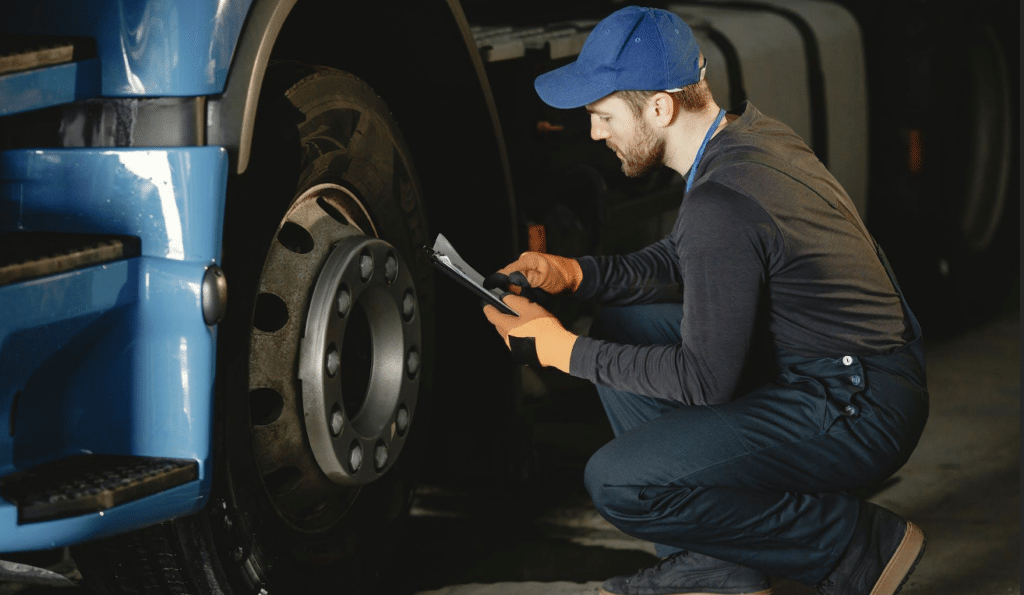The freight transport industry is an important element in the global economy, facilitating the delivery of goods over long distances. Indeed, with more than $700 billion in annual revenue and around 3.5 million truck drivers in the United States alone, the truck industry has a huge impact on the economy.
On that note, technological developments have brought about a new era of efficiency, safety, and sustainability in the trucking industry over the past few years. Truck drivers rely on various specialized tools to navigate the demands of the road effectively. Beyond the traditional essentials like wrenches and tire pressure gauges, modern truckers leverage advanced technologies to enhance their efficiency and safety.
In this article, we will explore some of the advanced tools that are transforming the trucking industry.
Contents
Load Board Software
Load board software has become an indispensable tool for the trucking industry, streamlining the process of connecting shippers with available carriers. This technology provides an online platform where freight brokers can post available loads, and trucking companies or independent drivers can search for and book those shipments.
Load board software not only facilitates real-time communication between shippers and carriers but also offers features like load tracking, instant messaging, and automated documentation. Whether you’re an owner-operator or company driver, load board software has the potential to easily become one of your favorite truck driver tools as it can help you enhance efficiency, reduce empty miles, and optimize overall logistics operations. The transparency and accessibility provided by load board software contribute to a more dynamic and competitive freight market, benefiting both shippers and carriers by fostering quicker and more cost-effective load matching.
Telematics and Fleet Management Systems
Telematics systems have become integral to modern trucking operations. These systems utilize GPS technology and onboard sensors to provide real-time data on a truck’s location, speed, and various other performance metrics.
Fleet management software complements telematics by offering centralized control over a fleet of trucks, enabling companies to optimize routes, monitor fuel consumption, and schedule maintenance efficiently. These tools not only enhance operational efficiency but also contribute to cost savings and improved safety.
Electronic Logging Devices (ELDs)
ELDs have replaced traditional paper logbooks, changing how truckers record their service hours. Mandated by regulatory authorities in many regions, ELDs automatically log driving hours, helping to prevent driver fatigue and ensuring compliance with industry regulations. By providing accurate and easily accessible data, ELDs streamline record-keeping processes and contribute to a safer driving environment.
Predictive Analytics for Maintenance
Predictive analytics tools analyze data from various sensors and monitoring devices on trucks to predict potential maintenance issues before they become critical. By anticipating when components may fail, trucking companies can schedule proactive maintenance, reducing downtime and minimizing the risk of unexpected breakdowns. Remember that this not only saves costs but also enhances overall fleet reliability.
Load Optimization Software
Load optimization tools use algorithms to determine the most efficient way to load cargo onto trucks, considering factors such as weight distribution, cargo type, and delivery schedules. By maximizing available space and ensuring balanced loads, these tools contribute to fuel efficiency and reduce the number of trucks needed to transport a given volume of goods.
Tire Pressure Monitoring System (TPMS)
TPMSs have become a crucial component in the trucking industry, ensuring the safety and efficiency of commercial vehicles. These monitoring systems continually track the air pressure in each tire and provide real-time feedback to truck drivers, alerting them to deviations from optimal pressure levels.
Truck drivers should pay close attention to maintaining proper tire pressure as it is essential for fuel efficiency, tire longevity, and overall road safety. TPMS helps prevent tire blowouts and breakdowns and contributes to reducing fuel consumption by ensuring that tires are adequately inflated. By providing timely and accurate information on tire health, TPMS enhances the overall operational efficiency of trucks, minimizing downtime and promoting a safer and more economical journey on the road.
Autonomous Vehicles
Significant progress has been made in the truck industry in developing autonomous or semi-autonomous vehicles. Despite fully autonomous vehicles still in the test phase, semi-autonomous features, such as adaptive cruise control and lane-keeping assist, are continuously being integrated into modern trucks. These technologies may lead to improved fuel efficiency, reduced accidents, and address the industry’s persistent issue of driver shortages.
Blockchain for Supply Chain Transparency
By putting an immutable and transparent record of transactions into the supply chain, blockchain technology is making its mark in the transport sector. Through smart contracts, blockchain ensures that all parties involved in the transportation process, including shippers, carriers, and receivers, have access to real-time information. This can streamline paperwork, reduce disputes, and enhance trust between stakeholders.
Conclusion
In the freight transport sector, advanced technologies and tools have resulted in a digital transformation, enabling them to increase their speed, safety, and sustainability. With the ongoing evolution of these tools, trucking companies that integrate them into their operations are poised to maintain a competitive edge. These tools can help them provide better services, optimize costs, and contribute to the overall advancement of the industry.


